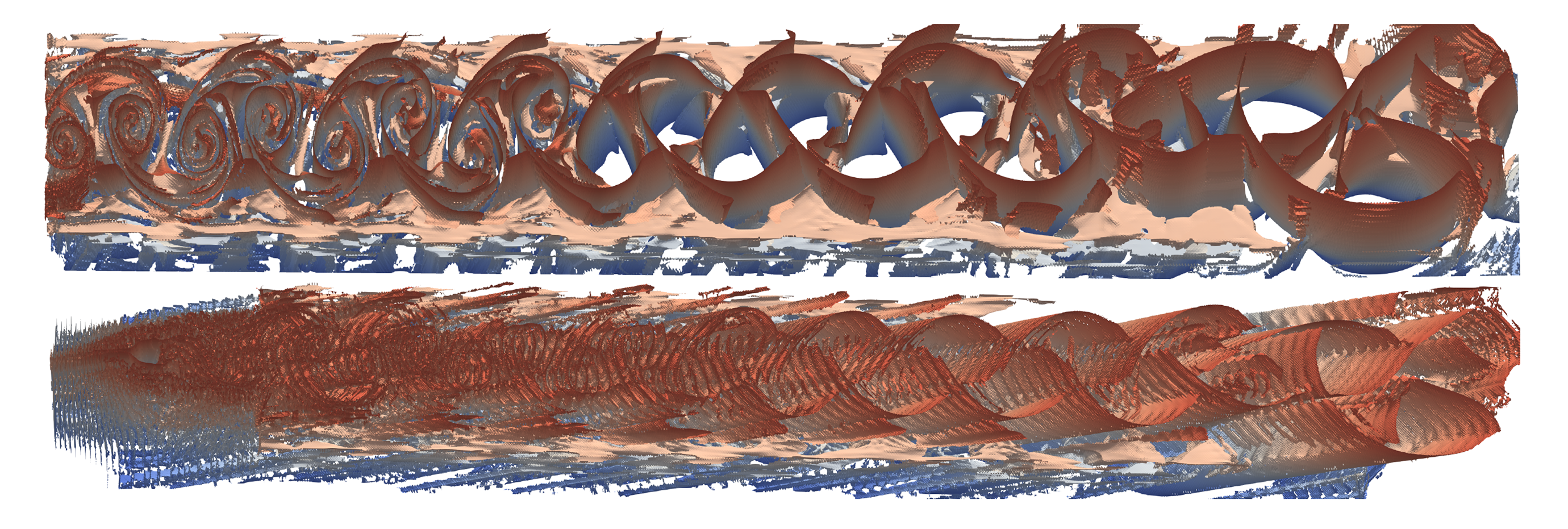Visualizing Extreme Weather Events from the WRF Simulation
KVL Staff on Project
Thomas Theussl
Visualization Core Laboratory
![]() KAUST PI on Project
KAUST PI on Project
Markus Hadwiger
markus.hadwiger@kaust.edu.sa
KAUST Visual Computing Center
Overview
KVL in collaboration with Prof. Markus Hadwiger's group worked on improving the visualization of fluid flow, specifically how we see and understand the movement and boundaries within unsteady (changing) flows. Think of it like trying to watch and understand a swirling river or smoke moving in the air. The goal is to make it easier and more accurate to see the important structures and patterns within these flows.
Work Summary
The researchers developed a new technique that uses “local reference frames.” Imagine you're watching a parade. Instead of standing still, you start walking alongside one of the floats. This makes it easier to see the details of that float, rather than seeing it blur past you. The researchers do something similar with fluid flow data. They create “frames of reference” that move along with the flow's important features. By doing this, they can extract and visualize boundaries and structures more clearly. They use mathematical methods and computer algorithms to make this work, and they tested it on various fluid flow examples.
Impact
This research makes it easier for scientists and engineers to study and understand complex fluid flows. By providing clearer and more accurate visualizations, it can help in many areas, such as:
- Improving weather forecasting: Better understanding of air currents and weather patterns.
- Designing more efficient vehicles: Optimizing airflow around cars, planes, or ships.
- Studying ocean currents: Analyzing how water moves and mixes in the oceans.
- Analyzing industrial processes: Improving the flow of liquids and gases in manufacturing.
In essence, this work improves the tools we use to “see” and analyze fluid dynamics, leading to better insights and advancements in various fields.
More information and the full paper can be found here: https://vccvisualization.org/research/material_boundary/
